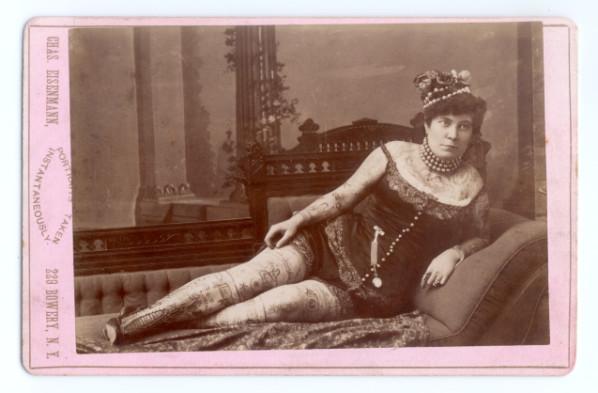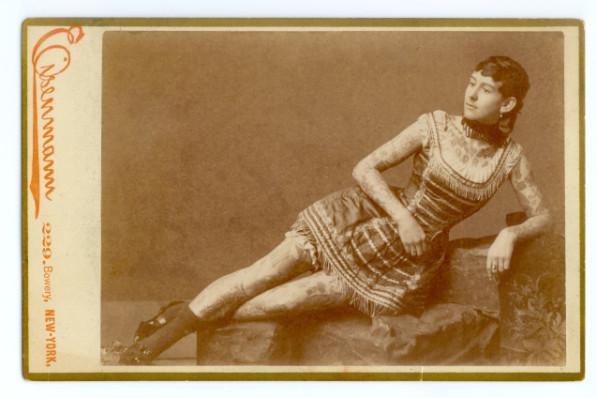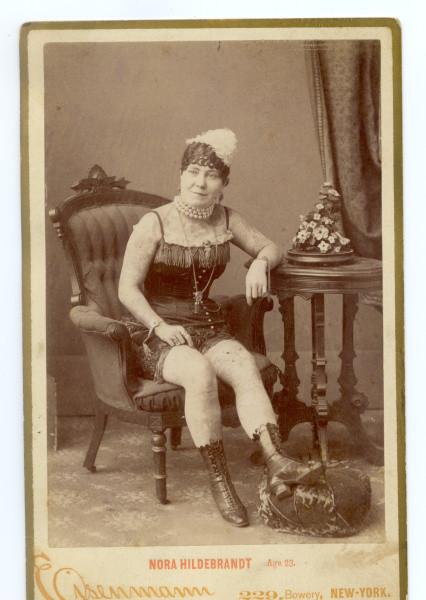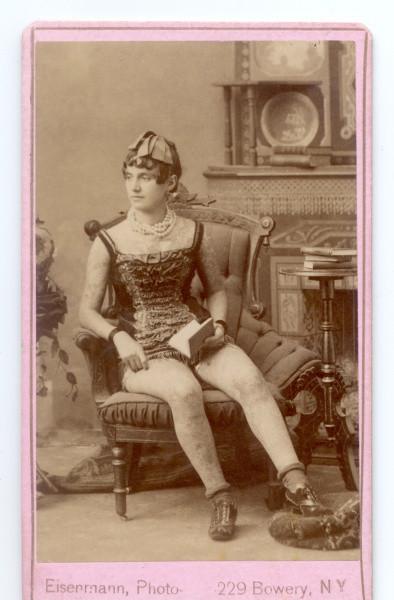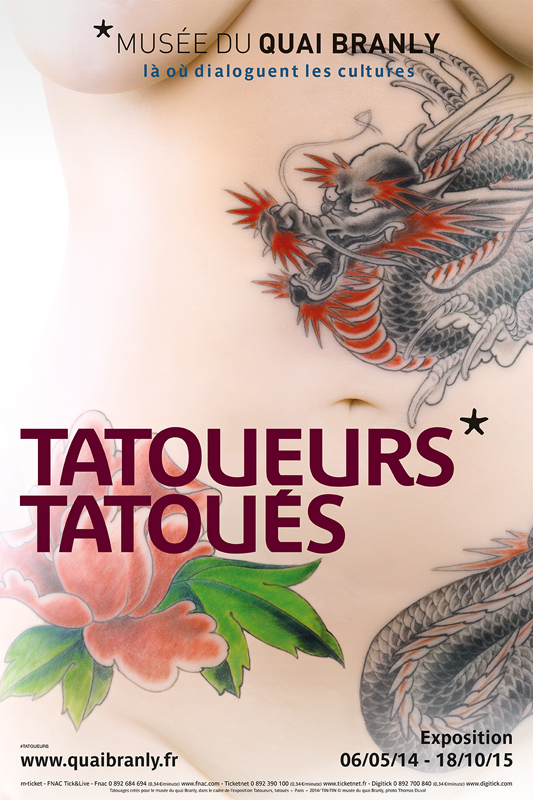Tattoo enthusiast Adriana de Barros, The Tattoo Journalist is an author, editor and photographer covering all things fine art and tattoos. Her unique interviewing style sets her apart, making her work with legends of the tattoo world a must-read. In this exclusive interview we chat to her about her career, tattoos and the future of tattooing…
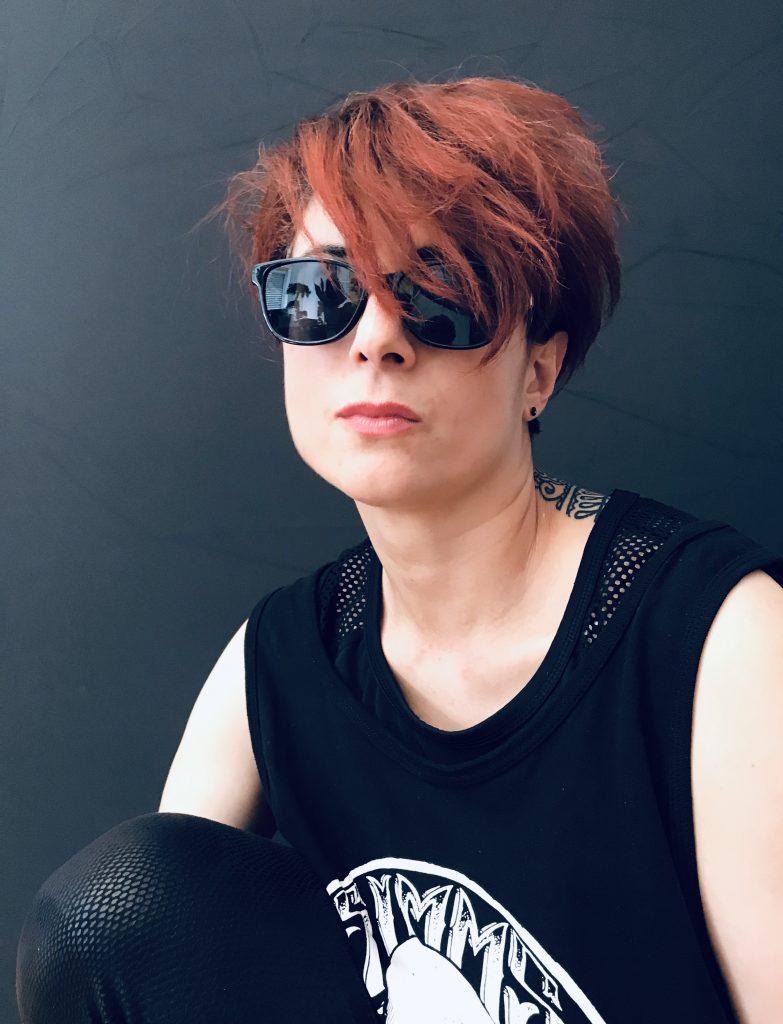
How did your fascination with tattoos begin? As a child, I remember seeing postcards and books with tattooed 19th-century women and circus performers from “Freak shows.” Outcasts drew me in because they were different.
I would have been heavily tattooed as a teenager with old-school sailor tattoos like swallows and other designs, if it hadn’t been for my severe pigment allergy. As a result, I had to wait a few decades longer for inks that were more natural and suitable for sensitive skin.
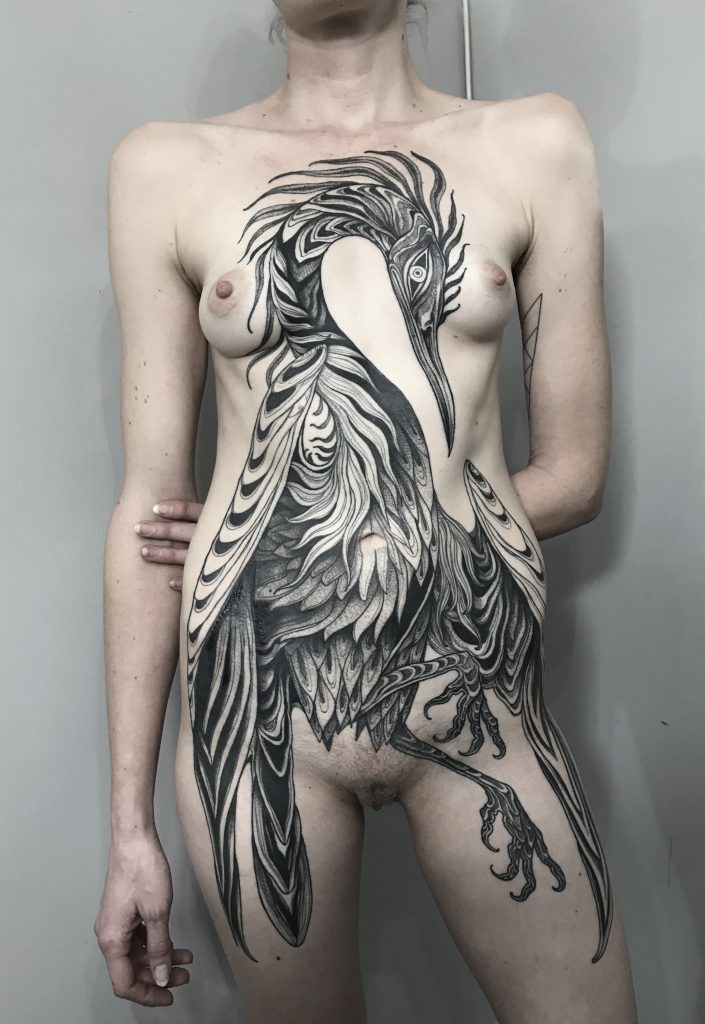
Which genre of tattooing are you drawn to the most? I enjoy all types of blackwork, from abstract to illustrative. Anything done well in black ink, positive or negative space — I’m drawn to the simplicity and ancient qualities of black ink and how it remains relevant and modern.
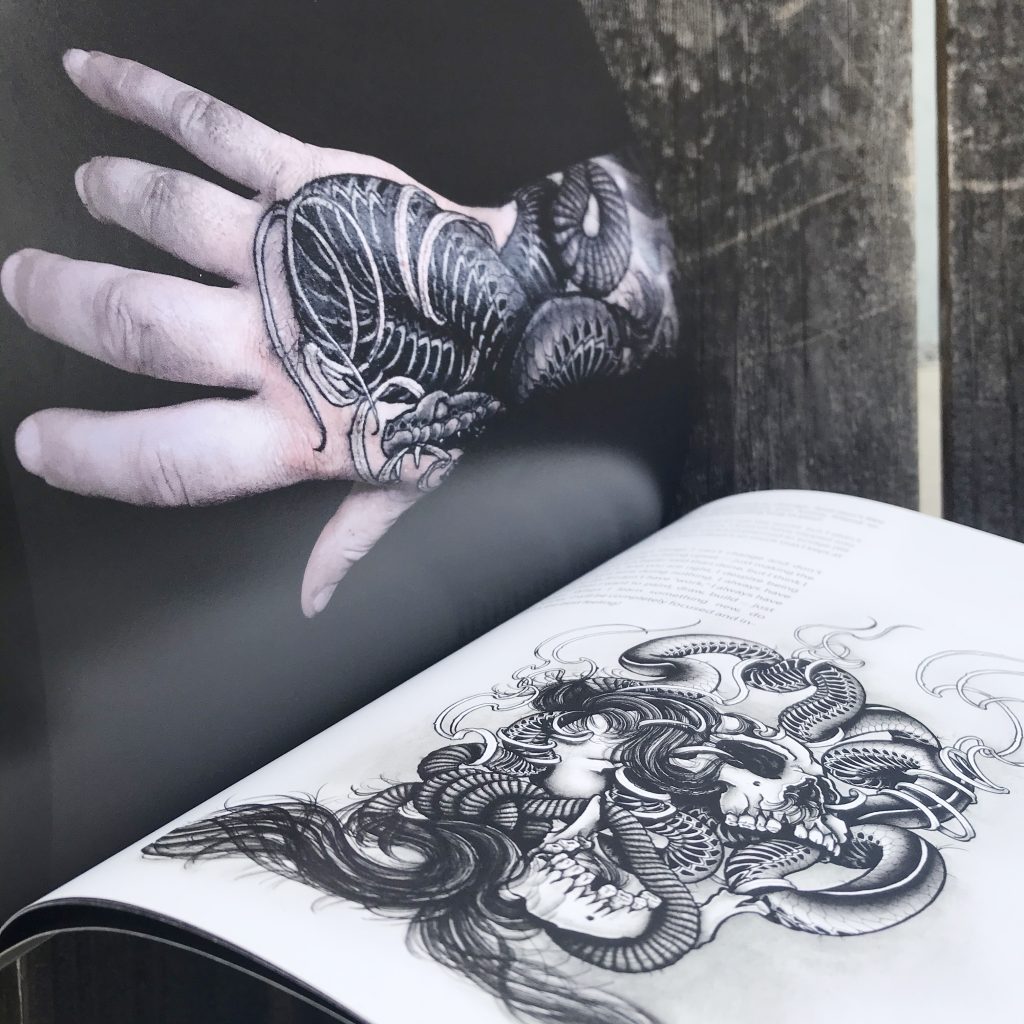
When did you get your first tattoo? Do you still like it? I got my first piece approximately five years ago, and it was a little heart in a less prominent location to allow me to test my response to the ink before getting a larger piece. Although the tattoo has sentimental meaning, I would not call it as attractive on an aesthetic level; I prefer more solid art like my backpiece.
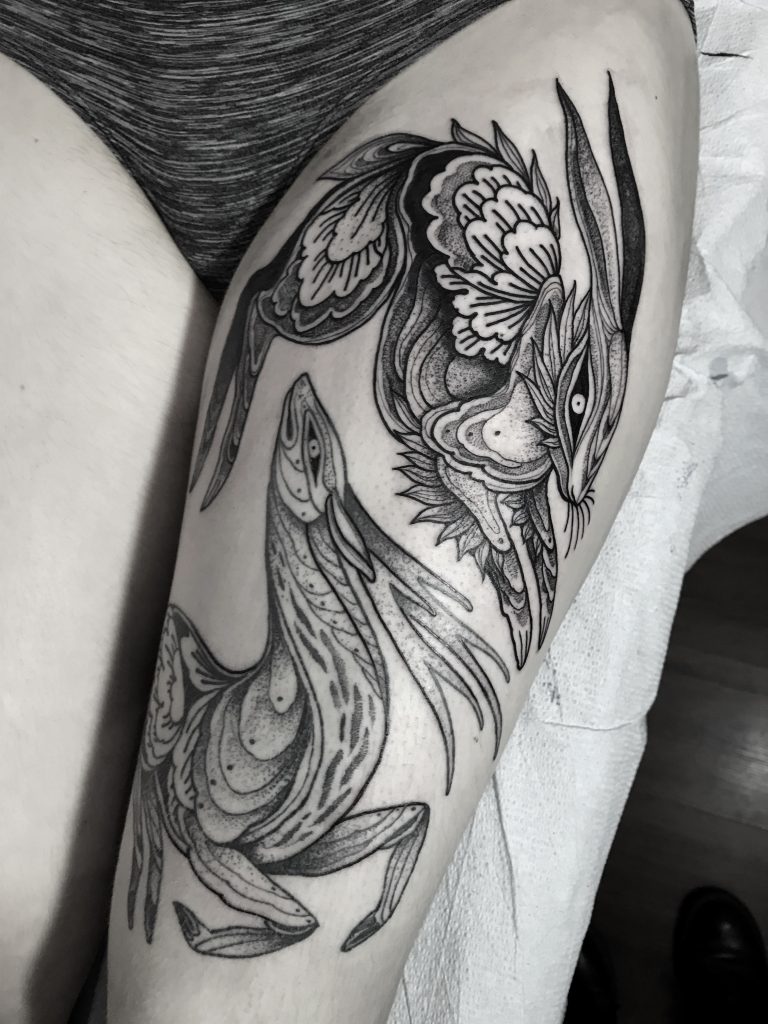
Do you consider yourself a tattoo collector? No, because I prefer to have a single flowing piece of art on my body. It took eight hours to complete an ornamental floral work on my back, and I’ll finish the ribs, shoulders, and arms in time. As a collector, the only thing that comes to mind is tattoo books, which I acquire for study and collection.

Do you prefer being tattooed at conventions or an artist’s studio? I’ve had both, but I prefer a calmer, quieter setting with more one-on-one interaction with the tattooist. As a spectator or member of the press, I enjoy conventions because they allow people to see tattooing on a larger scale and meet international artists. However, event spaces are challenging to navigate for artists or clients; it is a hectic environment.
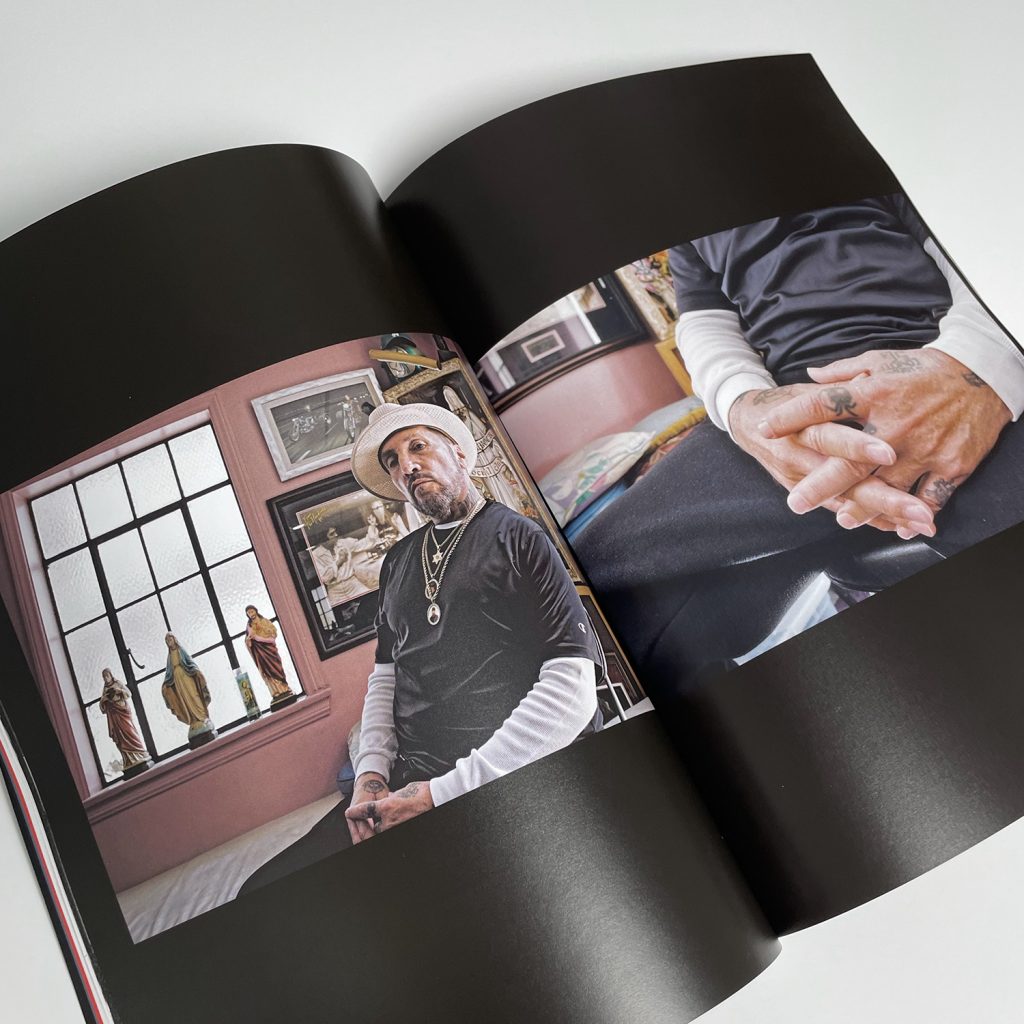
What is it about tattoos do you think that makes them so appealing? When they were underground, it was their edge and mystique. With the increased availability, I feel that the permanent-ink factor on the skin may be a lifelong commitment that empowers you. It becomes more than a decorative item; it imbues you with a traditional, spiritual sense.
It has the potential to transform you positively so that your inner sentiments become visible on your outer; you become more yourself.
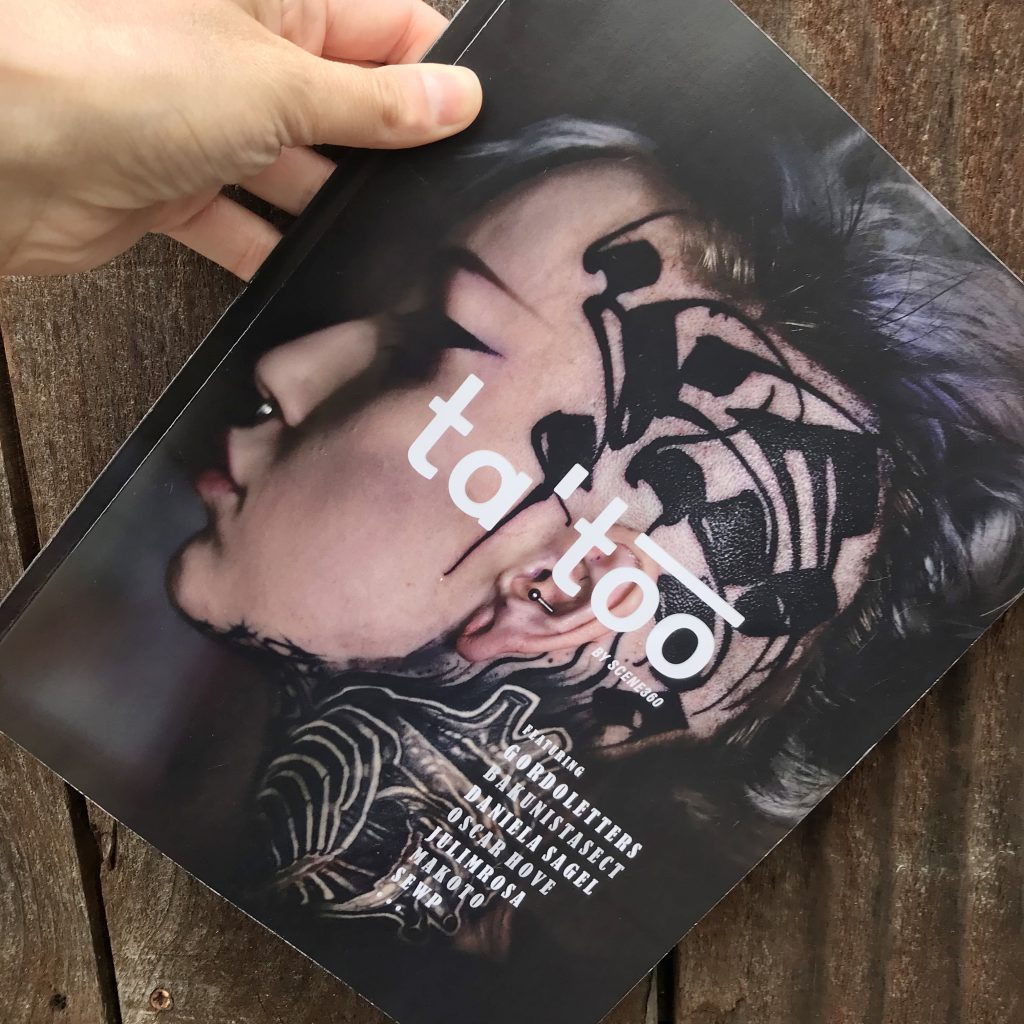
What inspired you to write your book Ta’too? Its goal is to offer an alternative to mainstream publications by being transparent about the tattoo community, the art, the history, and the human side of the narratives, rather than following internet trends. The first edition featured avant-garde tattooists ranging from Makoto to Oscar Hove.
The second covers tattoo legends from Charlie Cartwright to Kari Barba based in the United States, individuals with 30- to 40-year careers who paved the way for the rest of us. Younger generations frequently overlook them, and I believe they deserve to be featured and told their stories, which speak volumes about the industry’s growth.
The third will be completely different, focusing on raising tattoo awareness in other parts of the world.
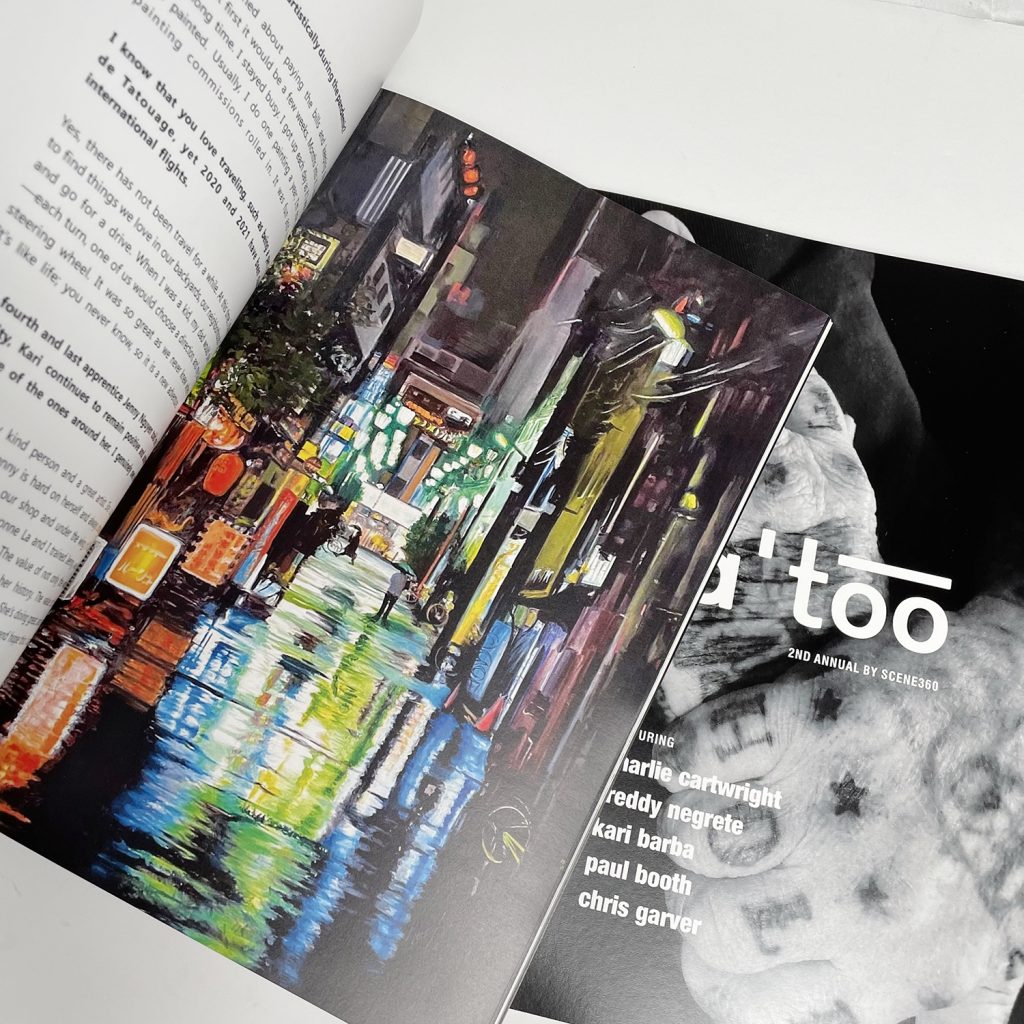
You’re the editor of Scene360. Can you tell us more about this publication? On December 1, 2000, I launched Scene360 as a digital arts and film magazine. It merged several art disciplines into a single publication that did not exist on the internet at the time.
It piqued readers’ interest right away. Film festival coverage (SXSW, Cannes), interviews with painters (Gary Baseman, Helnwein Gottfried), photography (Carl de Keyser, Kavan the Kid), and poet profiles were among the early highlights.
Scene360 was developed with the help of various contributing editors and writers. We included graffiti and tattoos, and as readers expressed interest, we added additional features. For the last decade, tattoo art has been one of our specialties, and Scene360 has shifted its focus entirely to tattoo content. It was nothing more than a natural occurrence.

What moment in your career, so far, are you most proud of? That’s a difficult one to answer. Having previously worked as a graphic designer and web developer, it took around 15 years of hard work to be recognised for a Webby Award for Best Art project in 2015 without any financial assistance or ties to a large firm. The majority of online ventures require funding to succeed. I didn’t have any; everything was self-sufficient. It taught me that I could achieve what seemed impossible.
The second happened not long ago, when I was at the Santa Rosa expo and had the honour of meeting legend Lyle Tuttle for the first time. I became engrossed in the moment, listening to his stories and absorbing his historical knowledge for hours. Sadly, he died a few weeks after we met, but that day stayed with me; he showed me that I was on the right track, that tattooing would be my life’s purpose. I am highly grateful to Lyle!
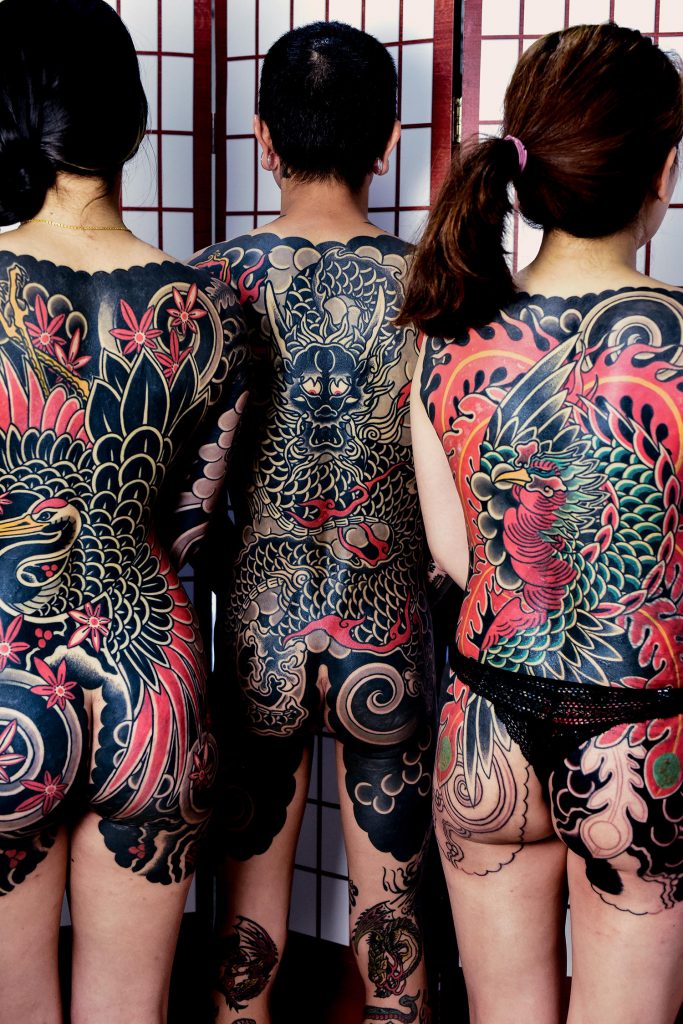
Do you have a favourite tattoo artist? Responding to this will send me to hell. I’m not going to name my favourites, but they include Maud and Gus Wagner, Sailor Jerry, Ed Hardy, Horiyoshi III, Chris Garver, Gakkin, Shane Tan, Hanumantra, and Makoto.
Is there an artist you’d love to interview? Ed Hardy.
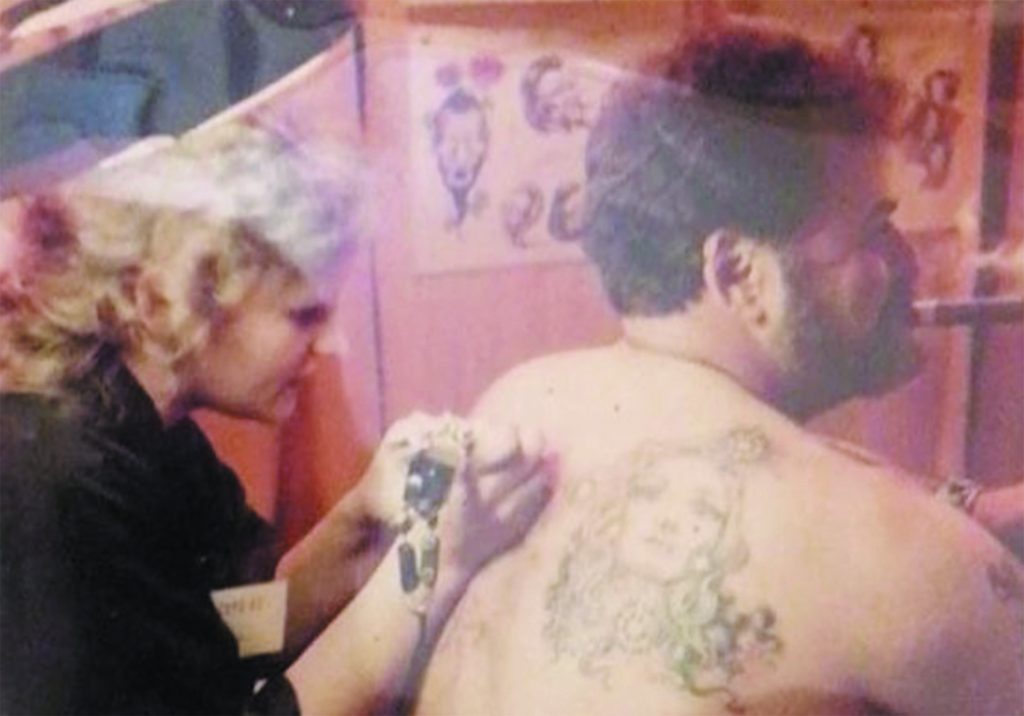
Which female tattoo artists do you admire? Along with Maud Wagner, who is credited with being one of the first female tattoo artists in the Western world—a pioneer and true inspiration—I love Kari Barba, who committed her work in the 1980s to promoting gender equality and has remained a tattoo force ever since.

The tattoo world is constantly changing; where do you see the tattoo industry going in the next 10 years? I believe we are in the midst of a new tattoo renaissance. East Asia is reviving—Japan, China, Singapore, and South Korea. Growth will occur in the West as well.
Creatives tend to feed off one another; if one region of the world excels, it pushes other areas to improve. Even though there are many tattoo artists today, the ones who will survive in the long run will be true artists with quality expression, composition, and technique.
In terms of a personal wish for the future, I hope that ink technology advances so that coloured pigments appear opaque and bright on darker skin tones.
Follow The Tattoo Journalist for more insightful interviews with tattooing legends.
